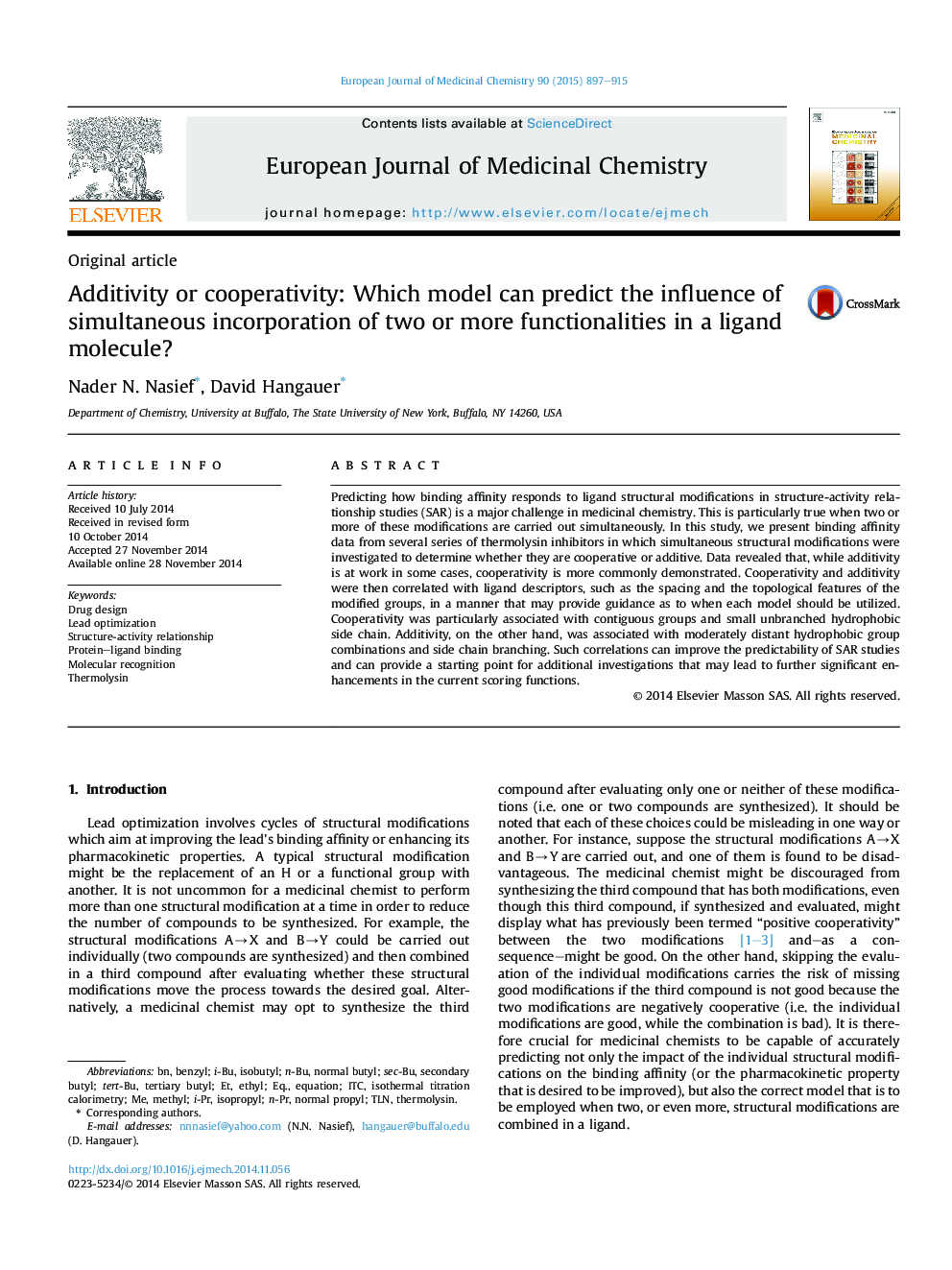| Article ID | Journal | Published Year | Pages | File Type |
|---|---|---|---|---|
| 1395530 | European Journal of Medicinal Chemistry | 2015 | 19 Pages |
•Functional group cooperativity/additivity was probed in 38 thermolysin inhibitors.•Cooperativity can account for 10-fold additional improvement in activity.•Cooperativity correlated with contiguous groups and small-sized side chains.•Additivity correlated with hydrophobic group combinations and branched side chains.•A preliminary algorithm for predicting cooperativity vs. additivity was proposed.
Predicting how binding affinity responds to ligand structural modifications in structure-activity relationship studies (SAR) is a major challenge in medicinal chemistry. This is particularly true when two or more of these modifications are carried out simultaneously. In this study, we present binding affinity data from several series of thermolysin inhibitors in which simultaneous structural modifications were investigated to determine whether they are cooperative or additive. Data revealed that, while additivity is at work in some cases, cooperativity is more commonly demonstrated. Cooperativity and additivity were then correlated with ligand descriptors, such as the spacing and the topological features of the modified groups, in a manner that may provide guidance as to when each model should be utilized. Cooperativity was particularly associated with contiguous groups and small unbranched hydrophobic side chain. Additivity, on the other hand, was associated with moderately distant hydrophobic group combinations and side chain branching. Such correlations can improve the predictability of SAR studies and can provide a starting point for additional investigations that may lead to further significant enhancements in the current scoring functions.
Graphical abstractFigure optionsDownload full-size imageDownload as PowerPoint slide
